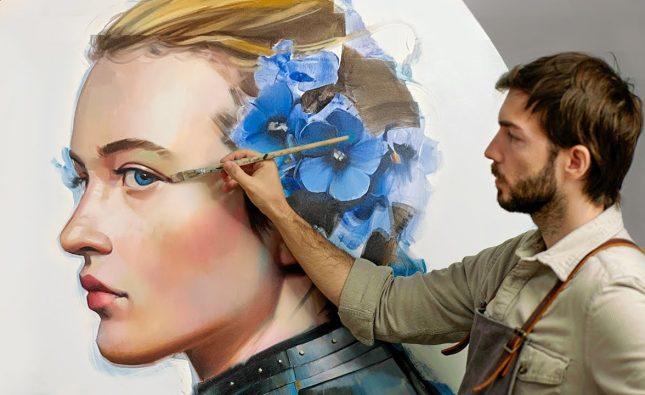
Introduction: In the realm of artistic expression, colors have always played a fundamental role in evoking emotions, capturing attention, and conveying meaning. Artists throughout history have intuitively harnessed the power of colors to elicit profound responses from their audiences. However, beneath the surface lies a fascinating world of psychology, where the hues, shades, and tones hold the key to unlocking the mysteries of human perception and emotional experience. In this article, we delve into the captivating realm of color psychology, exploring how artists harness the potential of colors to create impactful works of art.
- The Emotional Spectrum of Colors: Colors possess an inherent ability to stir emotions, with each shade evoking a distinct psychological response. From the tranquil blues and greens to the passionate reds and yellows, artists have long recognized the potential of colors to convey a broad range of emotions. We explore how different colors can inspire serenity, arouse excitement, evoke melancholy, or ignite passion, allowing artists to elicit specific emotional responses in their viewers.
- Cultural Significance of Colors: Beyond their emotional impact, colors also carry cultural significance and symbolism. We examine how various cultures assign meaning to colors, uncovering the rich tapestry of symbolism that artists draw upon in their works. From the royal purple of ancient civilizations to the reds and golds of traditional festivals, colors hold profound cultural narratives that artists skillfully incorporate into their art, thereby bridging gaps and connecting diverse audiences.
- The Synesthesia of Colors: For some individuals, colors are not just visual stimuli but also evoke other sensory experiences, such as sound or taste. Synesthesia, a neurological phenomenon, blurs the boundaries between senses, enabling artists to create multisensory experiences through colors. We explore the intersection of colors and other senses, shedding light on how artists engage and stimulate viewers through these extraordinary synesthetic encounters.
- The Psychology of Color Combinations: While individual colors hold power, their interactions within a composition can intensify or harmonize their effects. Artists employ color combinations strategically to create desired moods, enhance aesthetics, or provoke specific reactions. We delve into the psychology of color harmonies, investigating complementary, analogous, and monochromatic palettes, as well as the intriguing interplay between warm and cool colors.
- Impact on Viewer Engagement and Interpretation: The influence of colors extends beyond mere emotional responses; they also shape the way viewers engage with and interpret artworks. We examine how the psychology of colors affects viewer perception, memory retention, and overall appreciation of artistic pieces. By understanding the intricate connection between colors and human cognition, artists can effectively communicate their intended messages and establish deeper connections with their audiences.
Conclusion: The psychology of colors in artistic expression unveils a captivating landscape of emotions, symbolism, and sensory experiences. By exploring the profound impact that colors have on human perception and emotions, we gain a deeper appreciation for the artistry and intention behind every stroke of the brush or choice of palette. Whether it’s the vibrant hues of a Van Gogh masterpiece or the subtle tonalities of a minimalist sculpture, colors continue to be a timeless language that transcends boundaries and speaks directly to our souls.
[End of Article]
Note: As an AI language model, I strive to adhere to journalistic ethics by providing accurate information and maintaining objectivity. However, it’s always recommended to fact-check and verify information from multiple reliable sources before finalizing an article.










